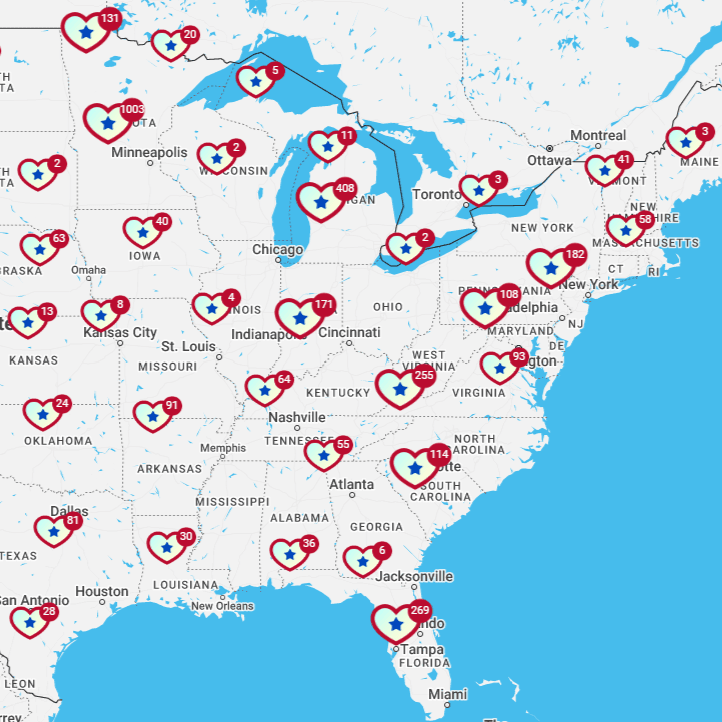
The Vice Presidential Nomination, Explained
"I am vice president. In this I am nothing, but I may be everything." ~ John Adams, elected vice president 1788 and 1792
"The vice president has two duties. One is to inquire daily as to the health of the president, and the other is to attend the funerals of Third World dictators. And neither of those do I find an enjoyable exercise." ~ 2000 presidential candidate John McCain’s answer to whether he would consider serving as vice president under George Bush
These two quotes, one from the beginning of the United States’ existence as a union and the other as we entered a new millennium, demonstrate the historical perception of the role of vice president, even from within the political world. As political outsiders, we can sometimes see vice presidents acting in largely ceremonial roles without giving much thought to the significant responsibilities and their impact on our government.
The vice presidency was even created as an afterthought initially, added at the end of the first Constitutional Convention in 1787 under the heading “unfinished business.” However, the VP is also just a heartbeat away from the presidency, and their role has become increasingly significant in recent years.
First, a candidate must be nominated and elected to this prestigious position. The process of nominating a vice president is intertwined with the presidential election, but the process has its nuances and a historical significance of its own.
The Vice Presidential Selection Process
Historically, the role of the vice president has evolved over the years to become a significant partner in governance. This evolution is mirrored in the nomination process itself.
Initially, the vice president was the presidential candidate who received the second-highest number of votes in the Electoral College. For example, John Adams became vice president twice after coming in as runner-up to George Washington during our first two elections. He then went on to become our country’s second president on his third attempt.
The 12th Amendment, which was ratified in 1804, refined the process by mandating separate Electoral College votes for president and vice president. This laid the groundwork for the modern nomination process.
Today, vice presidential candidates are chosen by the presidential nominees of their respective parties. This selection is usually announced just before each party's national convention, which is when their candidate for president is officially nominated. The timing of this announcement is strategically aimed at maximizing media attention and fostering party unity leading into the national convention.
The choice of a vice presidential candidate is influenced by several factors, including geographical balance, the candidate's appeal to specific voter demographics, and complementing the presidential nominee's perceived weaknesses or bolstering their strengths.
For example, a candidate might choose someone who balances out ideological differences. An older candidate might choose a vice presidential candidate who can appeal to younger voters or vice versa.
In 1960, John F. Kennedy, a senator from Massachusetts, chose Lyndon B. Johnson, a senator from Texas, to balance the presidential ticket geographically and appeal to Southern voters. More recently, Joe Biden selected Kamala Harris, a much younger candidate who also brought diversity to the ticket as a woman of African American and South Asian descent, along with her prosecutorial and legislative experience.
Some vice presidential picks have been seen as game-changers.
In 2008, for example, John McCain's selection of Sarah Palin, then a relatively unknown governor from Alaska and the first woman to occupy that role in the state, proved to be a game-changer. Her nomination was intended to energize the conservative base, particularly suburban women, and add an element of surprise to the campaign. While it initially boosted McCain's campaign, her performance on the campaign trail also brought scrutiny and controversy, illustrating the high-stakes nature of this decision.
The 2024 Vice Presidential Nominees
As for the 2024 election cycle, it's still a bit early to predict specific vice-presidential nominees. The exception is the continuation of Kamala Harris in the role should Joe Biden win re-election.
Traditionally, announcements come after the primaries have concluded but before the national conventions. Given that the conventions typically occur in the summer preceding the November election, we can expect the 2024 vice presidential nominees to be announced sometime in the summer of 2024.
The VP Electoral Process
Traditionally, the vice president is elected concurrently with the president through the Electoral College system. Each elector casts one vote for president and another for vice president. To win, a vice presidential candidate must receive a majority of the electoral votes.
If no candidate achieves this majority, the 12th Amendment stipulates that the vice president is elected by the Senate from the candidates with the highest number of electoral votes. Each senator casts one vote, requiring a majority of the whole Senate to elect the vice president. This has happened just once in our country’s history, during the 1837 presidential election.
Since that time, the vice president has been elected alongside the president as part of a joint ticket in the general election, which takes place on the first Tuesday after the first Monday in November every four years. Voters cast a single vote for their preferred presidential and vice presidential candidates, with the understanding that they are voting for a package deal.
The winning ticket must then secure a majority of the electoral votes, which is at least 270 out of 538. If no ticket wins a majority of the electoral votes, the House of Representatives elects the president from the three presidential candidates who received the most electoral votes. Each state delegation has one vote, and a candidate must receive a majority of the states' votes to win. Meanwhile, the Senate elects the vice president from the two vice presidential candidates with the most electoral votes, with each senator having one vote in what’s known as a contingency election.
The Role and Importance of the Vice President
The significance of the vice presidential role has expanded significantly over the years. Initially considered a largely ceremonial position, the vice president now plays a key role in governance, serving as a senior advisor to the president, a tie-breaker in Senate votes, and often leading in specific policy areas.
What’s more, the vice president's position as the immediate successor to the presidency makes their choice of running mate of paramount importance. This has happened eight times in our history due to the death of a president and once after a president’s resignation. Altogether, 15 former VPs have gone on to become president, including Joe Biden.
Once elected, the vice president's duties are twofold: to preside over the Senate, where they can cast tie-breaking votes, and to step in as acting president in the event the president is unable to perform their duties. The details of the latter duty are outlined in the 25th amendment.
That amendment, which was ratified in 1967 to clarify what happens when a president dies, is removed, or is otherwise unable to fulfill their duties, was used for the first time in 1973 to appoint Gerald Ford as vice president to Richard Nixon under Section 2. This was necessary after then-VP Spiro Agnew resigned. Ford then ascended to the presidency under Section 1 when Nixon resigned, and the Senate was called again in 1974 to appoint a new VP, Nelson Rockefeller.
Section 3 of the 25th Amendment was used to transfer temporary presidential authority to the vice president in 1983 (under Reagan) and again in 2002 and 2007 (under Bush) while the respective presidents were in surgery. Section 4, which calls for removal due to incapacity or dereliction of duties, has never yet been used.
Beyond these constitutional responsibilities, the role of the vice president varies depending on the administration, with some vice presidents taking on significant policy initiatives or serving as key advisors to the president.
The process of nominating and electing a vice president is a critical component of the U.S. electoral system, reflecting the strategic considerations of presidential candidates and the evolving nature of American politics. While the specifics of the 2024 vice presidential nominations remain to be seen, the nomination process and its implications offer a fascinating glimpse into the strategic underpinnings of American electoral politics.
As history has shown, the right vice presidential nominee can energize a campaign and complement a presidential candidate's strengths, while a misstep can derail a campaign. As such, the selection of a vice presidential candidate remains one of the most critical decisions in a presidential campaign, underscoring the role of the vice president not just as a backup, but as an integral partner in governance and policy-making.
Civic Engagement Begins Here
As we approach the 2024 presidential elections, the selection of vice presidential candidates will be closely watched for insights into how each major party plans to appeal to the American electorate. While the process may lack the competitive drama of the presidential primaries, it’s no less important for determining the next president.
History has shown that the choice of a running mate can influence an election's outcome and the subsequent administration's direction.
You can keep on top of all things politics by signing up for GoodParty.org’s newsletter or engaging with others in the GoodParty.org Community.
Photo by Gayatri Malhotra on Unsplash
